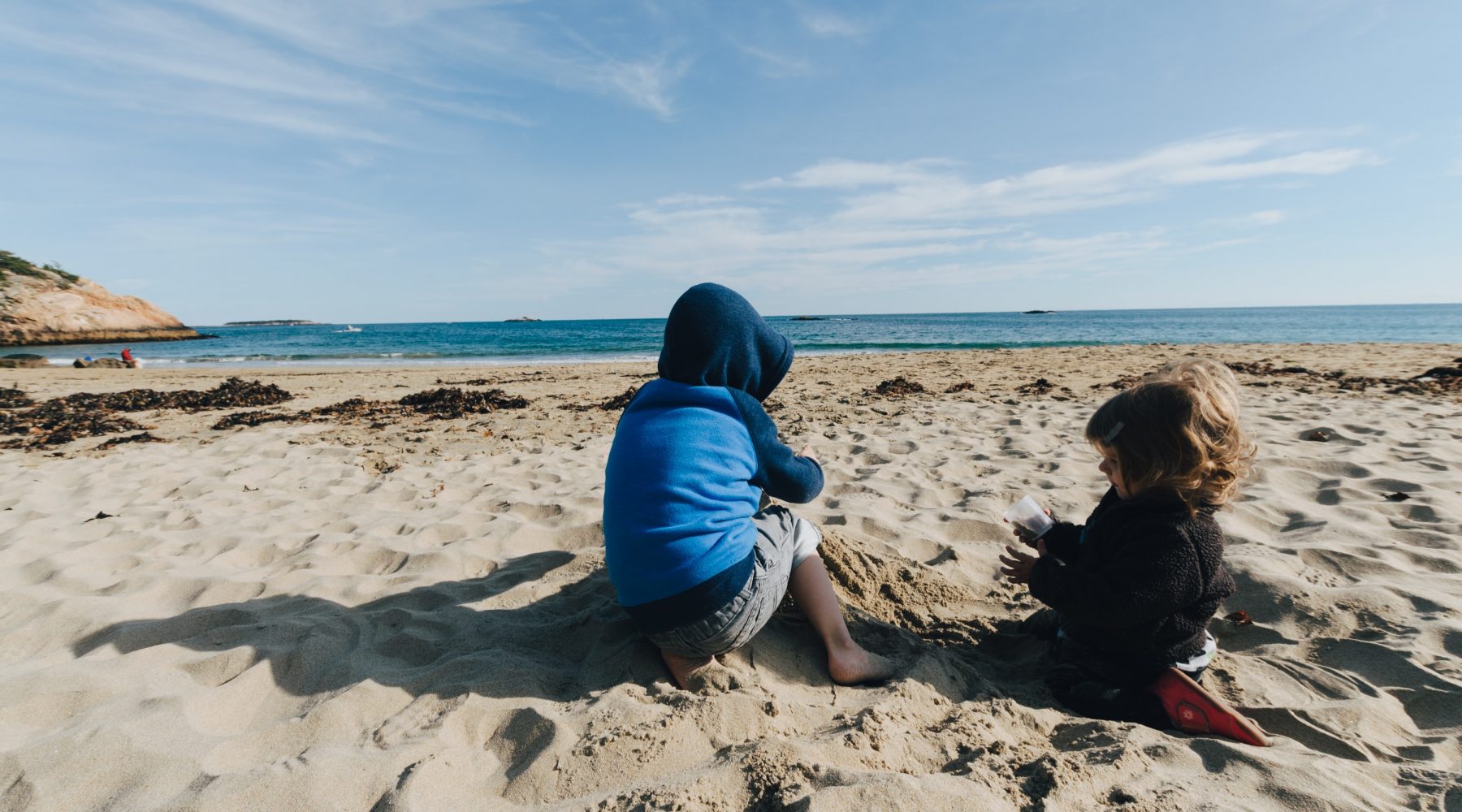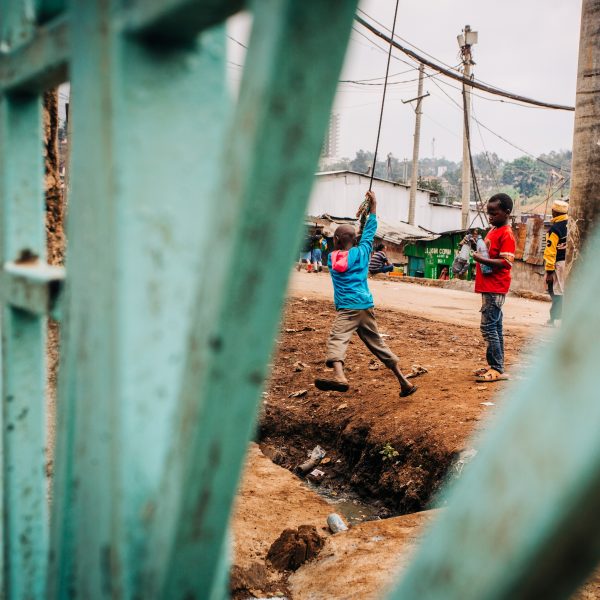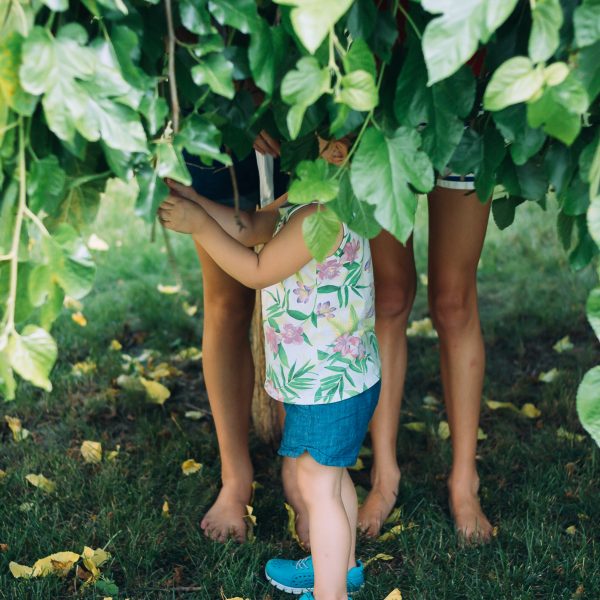Practising essential risky play safely in ECEC settings

If I were to ask you what memorable outdoor play you experienced as a child, what recollections would you have?
Skateboarding fast downhill, climbing the highest tree, whirling crazily around in circles on a fast flying roundabout, spending all day at the park on your own… and what about the game ‘brandy, where you’d run for your life so you wouldn’t get ‘branded’ by the ball being pelted at you?
A child of the 1970’s I may be but the thrill of risk taking was part of my upbringing. My entire childhood was spent unsupervised and building character.
I often ask my Early Childhood Education and Care (ECEC) students to recall one of their memorable childhood play experiences. Most often, they remember their own outside play, which was full of fun and adventure. I follow up this question with, “how can we recreate that feeling of adventure in our ECEC services?”
When we think of adventure, we often think of play that involves climbing trees, lighting fires, exploring and being with our friends – in other words risk taking play.
How can we implement this type of risky play full of adventure safely, without the need to fill in incident reports and the stress of the thought of someone hurting themselves?
How can educators encourage risk-taking in outdoor play?
Sandseter defines risky play as “a thrilling and exciting activity that involves a risk of physical injury, but also provides opportunities for challenge, testing limits, exploring boundaries and learning about injury risk.”
Some examples of this type of play in early childhood services may include; fire pits, tree climbing, flying high on a swing, carpentry with real tools, hanging upside down, jumping off big rocks and using sticks and branches to build and create.
Many ECEC services are also taking up the opportunity to implement Bush Kinder programs, where the portion of the learning day is held in an outdoor setting, such as bushland, beaches or a large park.
“The development of bush kinders reflects the mounting body of evidence that outdoor activities such as exploring natural environments, are beneficial to children and contribute to improving children’s health and wellbeing”. (Bush Kinder Handbook)
Many of these risk taking concepts may be deemed dangerous and irresponsible by some educators and parents at first glance, within the ECEC environment.
Services may find themselves fighting an uphill battle to show the value of outdoor risky play to some of their educators and families.
It is important to remember that negative comments come from a place of concern. It may be necessary to prepare some material about the value of risk and play, or perhaps hold information sessions and to work in conjunction with the parent community, talking through any challenges or concerns.
Here are some ideas that may support in encouraging others to see the benefits of providing opportunities for risky play –
- Research the benefits of this type of play and why it has such positive outcomes for children’s wellbeing. Niki Buchan talks about risk in ECEC, as does ACECQA in We Hear You. You could also look at Kidsafe NSW for further resources.
- Examine and challenge your fears about allowing children to explore risk-taking adventures. Are there some misconceptions holding you back?
- Discuss risk with other educators on your team – how does everyone understand risk? How will you move forward? What is the shared vision? .
- Educate families on your findings. Share this information via newsletters, posters, displays, conversations, parent nights and team meetings.Invite other services who implement risky play to attend your service as guest speakers or even better, visit their early learning environment to see risky play in action.
- Start off with easy manageable experiences, such as using loose materials and natural materials to create dens, or carpentry with basic tools, so parents, educators and children build trust and understanding of the implications of this play.
- If you feel unsure about how to manage or support this type of play, introduce risk-taking in your own service before you implement a Bush Kinder experience.
- A successful outdoor program that encourages risk-taking means you should have some resources available. Some examples include equipment with height, such as climbing frames, swings, ladders, also natural materials, such as branches, tree stumps, sticks, to drag around, use of tools to saw, hammer and drill, ropes for tying up and dragging things around and loose parts to enhance any type of play.
- Risky outdoor play covers all of the Outcomes in the Early Years Learning Framework!
-
- Outcome 1 – Children develop their emerging autonomy, inter-dependence, resilience and sense of agency
-
- Outcome 2 – Children become socially responsible and show respect for the environment
-
- Outcome 3 – Children become strong in their social and emotional wellbeing
-
- Outcome 4 – Children develop a range of skills and processes such as problem solving, inquiry, experimentation, hypothesising, researching and investigating
-
- Outcome 5 – Children interact verbally and non-verbally with others for a range of purposes
Why is risk-taking in play important for wellbeing?
Being in the outdoors with unlimited possibilities to explore, to create, to try again, to fail, to succeed, means educators are following a child-centred pedagogy, where children learn about managing situations and are able to assess risk. By promoting adventurous play, where children explore, are free and have fun, educators are supporting all areas of their development.
Managing risks helps children to develop their cognitive thinking by learning to problem solve. When outside, for example, children are thinking about how to climb down from a tree, working in teams to build a cubby, where to step so you don’t fall off a log…
Sometimes adults can underestimate the capability of children’s thinking. By allowing children to play in the wild outdoors, we are saying to them, “I trust you” and “You can do it”
Risky play is an impactful way to learn about consequences through the understanding, ‘if I do this, then that will happen’.
Savannah, an educator at Cranbourne Day Care & Kindergarten provides a Bush Kinder experience for her kinder aged children. She states how children are learning about risk by being involved in the outdoors. “…children become more aware of their surroundings. Such as, calling a child who has strayed away from the group, “Bob, you’re too far, come back!” and “This tree is not good for climbing, the branch is too wobbly.”.
….”children learn to judge risks through experience with risky situations and by developing the cognitive skills necessary to make more accurate judgments” (Plumert, 1995; Plumert and Schwebel, 1997).
Enhancing cognitive development in this way impacts positively on social and emotional cohesion.
Children’s thinking skills are being nurtured so their self worth becomes evident through the ability to take a risk, to explore, to play in open ended environments, where there are no right or wrong ways to do things, just learning to take risks safely.
Once the child feels empowered by their choices in play, they start to reach out to their peers, developing social unity and working together to build their next cubby or to climb on the fallen down tree together.
Assessing risk – what about safety, regulations, incidents and accidents?
John Locke and Jean Jacques Rousseau believed that play was a necessary part of childhood, contributing to health and wellbeing. With regards to the dangers of play, Rousseau suggested a child “must get used to danger too, so as not to be flustered by it”
So how do we incorporate the practice of risk-taking in the outdoor environment, safely?
- Education and Care Services National Regulation 113 states that children need to explore and experience the natural environment
- Quality Area 2 – Children’s Health and Safety, expresses children have the right to participate in activities and experiences that are challenging, extend thinking and present manageable risks.
- Complete risk assessment and risk matrix forms
- For all of your requirements and regulations for Bush Kinder, visit: https://www.education.vic.gov.au/childhood/providers/regulation/Pages/bushkinders.aspx
- Regulation 97(1)(b) states that children should be provided with a natural outdoor area “to explore and to learn the skills required to manage self risk”.
- As stated on the Education and Training website, Early Childhood services need to “plan learning environments with appropriate levels of challenge where children are encouraged to explore, experiment and take appropriate risks in their learning”.
- Information on general bush and beach safety can be found here – https://www.rch.org.au/kidsinfo/fact_sheets/Safety_Holidays_and_at_the_beach/
In Conclusion
When meeting children’s wellbeing needs through risky play, there will be moments of bated breath, as they take on these risks.
If we plan ahead, research the risks involved, actively supervise and remain informed, we will limit the negative outcome of incidents or accidents.
As professionals we also need to adhere to our Code of Ethics, by basing our work on research, theories, content knowledge, practice evidence and our understanding of the children with whom we care for.
Children have the right to opportunities that will help them grow into confident and independent individuals, ready for the school years and beyond.
Popular

Policy
Practice
Provider
Quality
Research
Workforce
Beyond the headlines: celebrating educators and the power of positive relationships in early learning
2025-07-07 10:00:24
by Fiona Alston

Workforce
Policy
Quality
Practice
Provider
Research
ECEC must change now, our children can’t wait for another inquiry
2025-07-02 07:47:14
by Fiona Alston

Workforce
Quality
Practice
Provider
Research
Beyond the finish line: Championing child protection one marathon at a time
2025-07-08 09:15:32
by Fiona Alston













